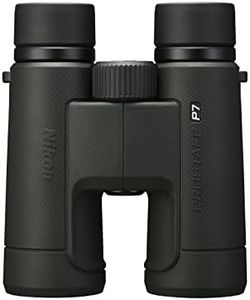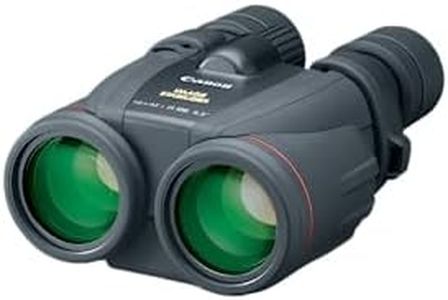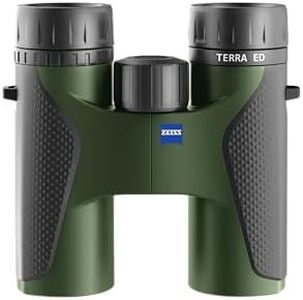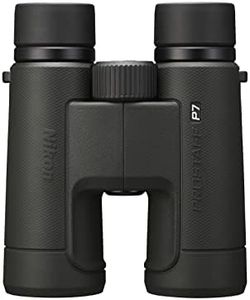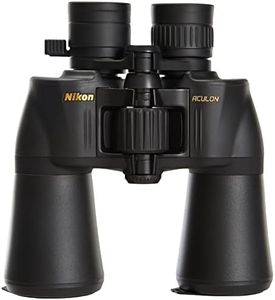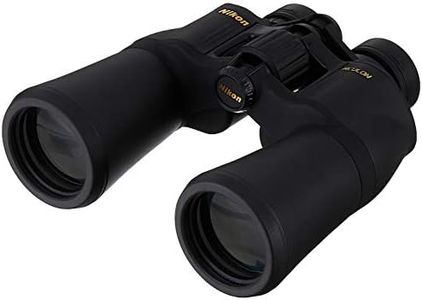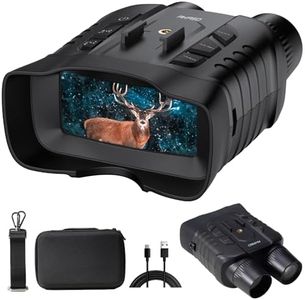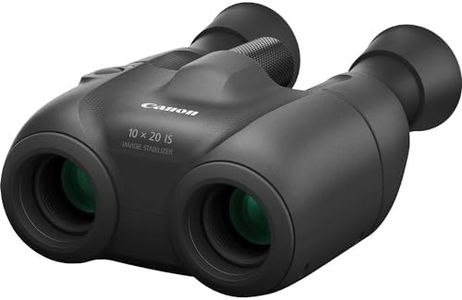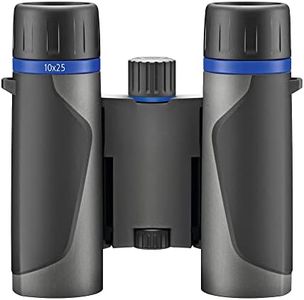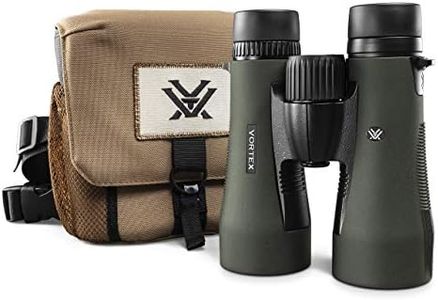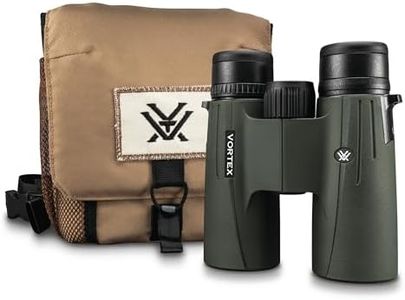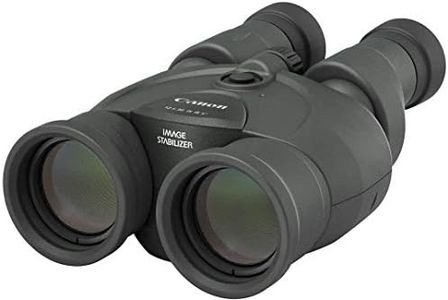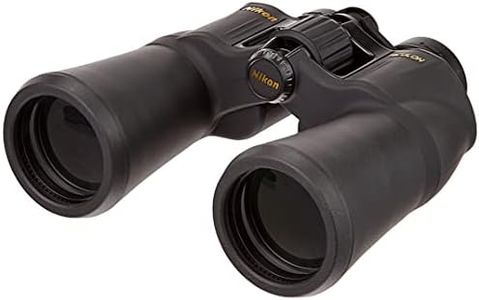We Use CookiesWe use cookies to enhance the security, performance,
functionality and for analytical and promotional activities. By continuing to browse this site you
are agreeing to our privacy policy
10 Best Binoculars
From leading brands and best sellers available on the web.Buying Guide for the Best Binoculars
Choosing the right binoculars can greatly improve your viewing experience, whether you are interested in bird watching, sports events, hiking, or stargazing. There are many types of binoculars and features to consider, each affecting what you see and how easily you use the binoculars. The key is to understand how each specification fits your intended use, so you can make a choice that balances clarity, comfort, and convenience. It’s smart to consider where and how you will mainly use them, as this determines which specs are most relevant for you.MagnificationMagnification tells you how much closer an object appears compared to the naked eye. For instance, 8x magnification makes things look eight times nearer. Lower magnification, such as 7x or 8x, provides a brighter and steadier image, which is best for general viewing or following moving subjects. Higher magnification, such as 10x or more, allows you to see distant details but can also be harder to keep steady and may produce a dimmer view. Consider what you’ll be looking at: for casual or fast-moving activities, moderate magnification is easier and more comfortable, while for stationary or distant viewing, higher magnification can be useful if you can keep the image steady.
Objective Lens DiameterThis is the size of the front lenses, measured in millimeters, and it affects both the amount of light your binoculars can gather and how bulky they are. Larger diameters (like 42mm or 50mm) let in more light, making images brighter, especially in low-light conditions like dawn or dusk. However, they make the binoculars heavier. Smaller diameters (like 25mm or 32mm) are more compact and easy to carry but might produce a dimmer picture, especially in poor lighting. Choose a size that matches your activities: bigger lenses for bright views in low light, smaller ones for traveling light.
Field of ViewField of view is the width of the area you can see through your binoculars, usually measured in feet at 1,000 yards or in degrees. A wider field makes it easier to track moving subjects and find things quickly, which is good for sports or watching wildlife. Narrow fields of view show more detail but cover less area, helpful for observing stationary or distant objects. If you’ll be following action or scanning large areas, a wider field is helpful. If detail and focus on one spot matter more, a narrower field may be suitable.
Eye ReliefEye relief measures the distance your eyes can be from the eyepiece while still seeing the full image. Long eye relief (usually 15mm or more) makes binoculars more comfortable, especially for eyeglass wearers. Short eye relief, on the other hand, can make it hard to see the entire view if you wear glasses. When choosing, think about whether you wear glasses and if you'll be using the binoculars for long periods. More eye relief adds comfort and flexibility.
Weight and SizeThe weight and physical dimensions of binoculars determine how easy they are to carry and hold. Lighter and more compact binoculars are better for travel, hiking, or any activity where you carry them for long periods. Heavier binoculars are usually more powerful but can be tiring to use or carry. Think about how often and how long you will hold them; pick lighter models for frequent or long use, and only choose larger, heavier ones if you specifically need what they offer.
WeatherproofingBinoculars can be built to resist water and fog, making them safer to use in rain or at the lake, and less likely to fog up during temperature changes. Terms like ‘water-resistant,’ ‘waterproof,’ and ‘fog-proof’ indicate these features, with waterproof and fog-proof models being sealed against the elements. If you plan on using binoculars outdoors or in changing conditions, prioritize weatherproof models for better durability and performance.
Prism TypeThe prism system inside the binoculars affects size, weight, and image quality. The most common types are roof and Porro prisms. Roof prisms give a straight, slim body and are durable and easy to carry, but can be more expensive. Porro prism binoculars are generally bulkier but may offer brighter and more three-dimensional images at a lower cost. Your choice will depend on whether size and portability or optical performance matter more for your needs.
